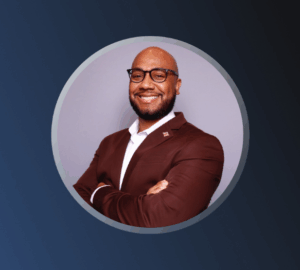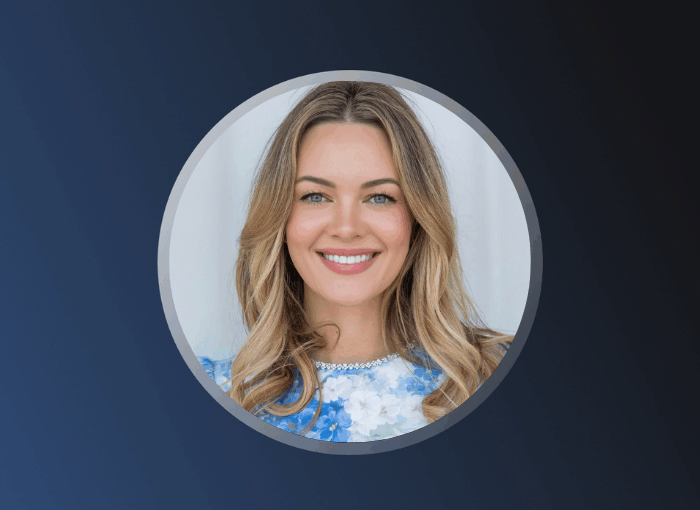Who: Lauren Kleinman, 35, founder, Los Angeles, CA
Helpful Oura insight: Lauren exported all her Oura data into ChatGPT to uncover patterns—like stress spikes during certain points of her cycle—and used AI-driven recommendations to boost her heart rate variability (HRV), Cardio Capacity (VO2 max), and Cardiovascular Age.
Lauren Kleinman is a Los Angeles–based entrepreneur and co-founder of award-winning PR agency Dreamday and Quality Media, which powers the content platform The Quality Edit. Across both, she leads a team of over 60 employees.
Lauren’s also a mother of two, which means her days are a constant dance of meetings, school drop-offs, and managing her energy levels to sustain it all. She does so by leaning on Oura data to guide her daily decisions around sleep, stress, and activity.
“Health and self-care are a non-negotiable for me,” says Lauren. “I define a good day based on my Oura data: less than 2.5 hours of stress, a Sleep Score of 90+, a Readiness Score of 84+, hitting 110% of my Activity Goal, and high Resilience!”
What led you to Oura?
I got Oura three and a half years ago. I had a one-and-a-half-year-old daughter at the time, and was finally past the scary no-sleep chapter of new motherhood. I was looking for ways to optimize my health, make sure I was moving enough during the pandemic, and to really start prioritizing my sleep. Oura felt like a gentle but data-driven way to hold myself accountable.
How do you use Oura in your daily life?
Activity & Heart Health
I check the Oura App every morning to see how I slept, and use that to guide how hard I should push—or when I need to be gentler on myself. I aim for 8,000–10,000 steps daily, and strength train two to three times a week.
I love tracking my VO2 max and heart health. I used the walk test feature and was pretty proud to see that I’m in peak Cardio Capacity! It’s easy to overlook that kind of progress unless something like Oura is tracking it.
READ MORE: How to Improve Your Cardio Capacity (VO2 Max)
Cycle Syncing
I use Oura to monitor my cycle and workouts. I tailor my workouts depending on where I’m at in my cycle–more cardio or lifting when I’m high energy and readiness, more walking and breathwork when I’m not.
LEARN MORE: How To Align Your Training With Your Menstrual Cycle
Daytime Stress & Resilience
I’m somewhat obsessed with the Daytime Stress feature and Resilience (for better or worse!). I intentionally structure my schedule to include brain breaks and space to decompress between meetings. I’ve definitely taken lighter days or canceled morning meetings when my Oura scores and how I feel are both trending low.
READ MORE: Burnout to Brilliance: How to Make the Most of Your Work Breaks
Tagging
I’ve recently started tagging emotional shifts—like if I’m feeling more anxious on a particular day—or tagging specific things that could impact my Sleep Score, like taking a sauna. Tagging has also helped me track things like moodiness, headaches, or even sex. It’s still early, but I love being able to overlay emotional and physical signals to spot trends.
One fun hack: I exported all my Oura data into ChatGPT to look for patterns, and I learned that I tend to feel more stress or anxiety around specific times in my cycle. That level of insight has been game-changing. I asked ChatGPT to optimize my metrics at the start of this year, and the results have been surprising.
| Member Tip: With the recent release of Oura Advisor, you can simply ask questions and receive personalized advice and feedback based on your own data directly within the Oura App. |
How did you optimize your metrics based on the advice?
I asked ChatGPT to analyze my Oura data and create a personalized plan to improve my HRV and VO2 max. It included suggestions like incorporating more brain breaks during the workday, doing more low-impact movement like walks, and strength training in ways that matched my cycle. It felt like having a wellness coach in my pocket, powered by my own data.
After implementing this advice, I was able to increase my HRV (on good days it’s in the mid-70s), lowered my Cardiovascular Age to 6.5 years younger than my actual age (I started at 3.5 years younger), improved my Sleep Score, and improved my Resilience level. Having real-time data that supports or challenges how I think I’m feeling has helped me make better decisions across the board.
RELATED: How Physician and Author Dr. Casey Means Optimizes Her Health with Oura
What’s Your Oura Story?
Everyone’s story is unique, and we’d love to hear yours. Share your story here.




